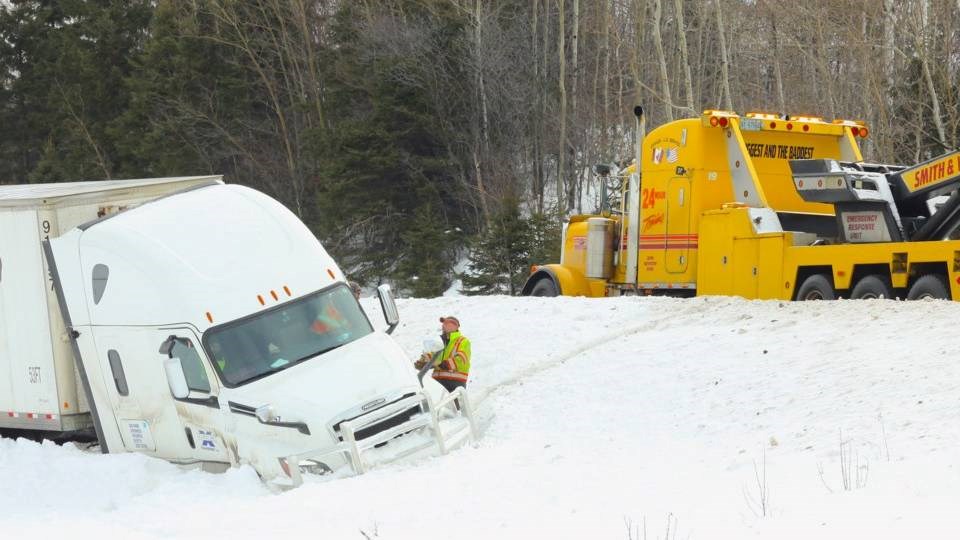A new provincial standard that will require two major Northern highways to be cleared 12 hours after a winter storm will be “critical” to making travel safer, according to the Federation of Northern Ontario Municipalities (FONOM).
The organization, which represents 110 communities across Northern Ontario, was responding to a Nov. 18 announcement by Transportation Minister Caroline Mulroney.
Starting immediately, Highways 11 and 17 must now be cleaned down to bare pavement 12 hours after a winter storm. That’s four hours faster than the previous standard, Mulroney noted.
“Our government is the first to create a new highway level of service that will ensure Highways 11 and 17 are cleared faster, while improving road safety for drivers in the North,” Mulroney said in a news release.
“Ontario already has nation-leading standards in place when it comes to winter maintenance, and this builds on our government’s broader efforts to ensure we keep it that way.”
The province said the change came in response to a detailed technical review of winter maintenance on Highways 11 and 17, and analysis of data from the winter maintenance pilot from the past two winter seasons on these highways.
Danny Whalen, FONOM’s president, said his group supported the decision.
“FONOM would like to thank Minister of Transportation Caroline Mulroney and the provincial government for making this critical change,” Whalen said in a Nov. 22 news release.
“Highways in Northern Ontario connect our communities, and having Highways 17 and 11 cleared quicker after the minimal standard is reached is important for road safety.”
Whalen also referenced the recent provincial decision to trial a 2+1 highway on Highway 11 north of North Bay.
Conceptualized in Europe, a 2+1 highway is a three-lane highway with a centre passing lane that changes direction approximately every two to five kilometres.
Groups such as the Temiskaming Chamber of Commerce’s Going the Extra Mile for Safety Committee has lobbied for the highway for years.
The province has finally agreed to undertake a pilot project using the model, and issued a request for proposals for contractors earlier this month.




